Why Experiential Marketing Works So Well
August 29, 2017 - by Taylor GetlerWhen Frito-Lay announced that they were opening a Cheetos-themed restaurant in Tribeca – lead by celebrity chef Anne Burrell and running for three days only – the response was predictably mixed. “Is nothing sacred?” wrote Chris Matyszczyk, covering the restaurant for Inc. While some felt queasy at the thought of eating “Cheetos Sweetos Crusted Cheesecake” or “Cheetos Meatballs”, many others were intrigued by the gimmick and were willing to give Burrell’s concoctions a try. For campaigns like this, it barely even matters if the meals were actually good. It was a very creative endeavor that earned a ton of press for the brand, and it’s unlikely that anyone (apart from a few die-hard Cheetos fans) went because they truly believed in Cheetos’ potential as a gourmet ingredient. Folks went for the novelty, because it was fun.
For campaigns like this, it barely even matters if the meals were actually good. It was a very creative endeavor that earned a ton of press for the brand, and it’s unlikely that anyone (apart from a few die-hard Cheetos fans) went because they truly believed in Cheetos’ potential as a gourmet ingredient. Folks went for the novelty, because it was fun.
This wasn’t the brand’s first time at the experiential marketing rodeo. Last year, San Francisco-based agency Goodby Silverstein & Partners helped bring the “Cheetos Museum” to life, showcasing uniquely shaped snacks that resembled everything from seahorses to President Abraham Lincoln. The stunt won the brand and the agency five Lions at Cannes 2017, a huge victory for both.
Experiential Marketing
Experiential marketing – creating unique, short, in-person branded experiences – has become a very popular tactic over the past few years, and there are a number of reasons why this strategy has such a strong track record. First, it accomplishes what brands often strive for in marketing, which is to create a sense of urgency and immediacy. These types of experiences typically only run from a few days to a few months, instilling in consumers the idea that they have to pay attention and act right away, or risk missing out.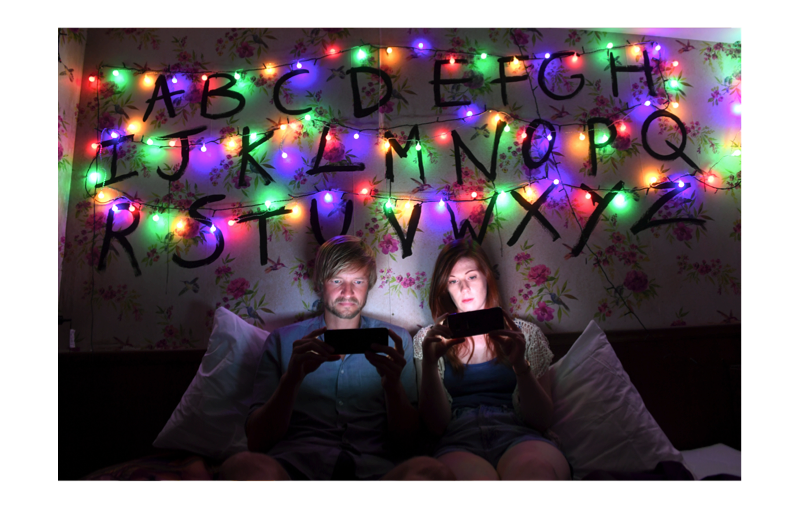 Secondly, the condensed time frame allows brands to go over the top and be extravagant, because their retail leases are very short. The overhead for something like the Netflix pop-up hotel – with themed suites that pair with the company’s original programming – would be enormous if it didn’t have an extremely limited run. Additionally, as department stores around the country struggle to compete against online retailers, commercial real estate groups are seeing short-term leases and pop-up deals as secure financial investments.
Secondly, the condensed time frame allows brands to go over the top and be extravagant, because their retail leases are very short. The overhead for something like the Netflix pop-up hotel – with themed suites that pair with the company’s original programming – would be enormous if it didn’t have an extremely limited run. Additionally, as department stores around the country struggle to compete against online retailers, commercial real estate groups are seeing short-term leases and pop-up deals as secure financial investments.
A cultural shift has influenced consumer-spending habits. Young people are putting more of their money into experiences than they are material goods, meaning that CPG companies that can serve up an experience with their product have a distinct advantage with millennial consumers.
Social Media IRL
Some brands have used experiential marketing as a way of proving that they understand their customers on a personal level. A great example of this is Kotex, which opened a pop-up shop for a weekend in 2016 that exclusively sold merchandise meant to make the experience of menstruating easier for women. Inspired by a college student’s blog post, the store carried comfortable clothes, snacks, beauty products, and other relevant items.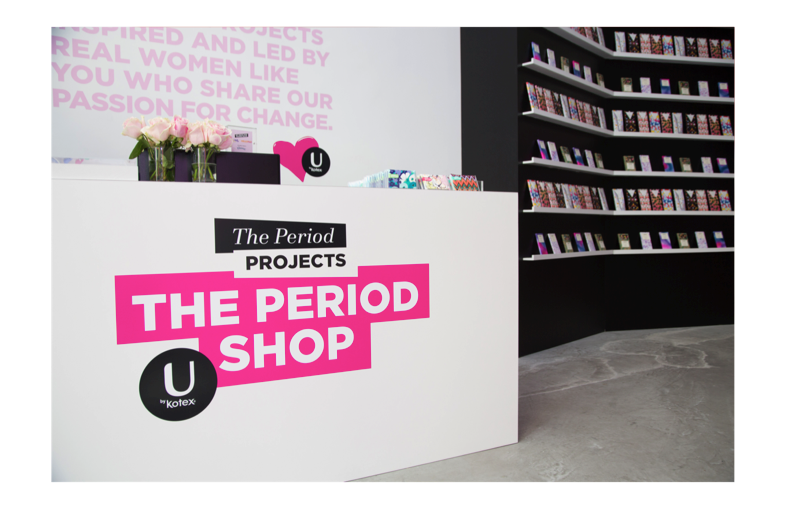 Last year, Ikea U.K. also used branded experiences to give its fans exactly what they’d asked for on social media. 100 Facebook users who liked a page called “I wanna have a sleepover in Ikea” were invited to make their dreams come true with massages, manicures, and hot cocoa, spending a night at the store in the bed of their choice.
Last year, Ikea U.K. also used branded experiences to give its fans exactly what they’d asked for on social media. 100 Facebook users who liked a page called “I wanna have a sleepover in Ikea” were invited to make their dreams come true with massages, manicures, and hot cocoa, spending a night at the store in the bed of their choice.
Fruit of the Loom creatively used experiential marketing to address poor brand perception. Crispin Porter + Bogusky dreamt up a luxury pop-up lingerie boutique called “Früt”, highlighting the quality of Fruit of the Loom’s products despite their affordability and generally unspectacular packaging. The true nature of the products – that they were not from some chic, vaguely-European luxe brand and were, in fact, regular Fruit of the Loom panties from a plastic bag – was concealed until customers got to the check-out counter, at which point the false logo on the wall spun around to reveal the brand’s real identity.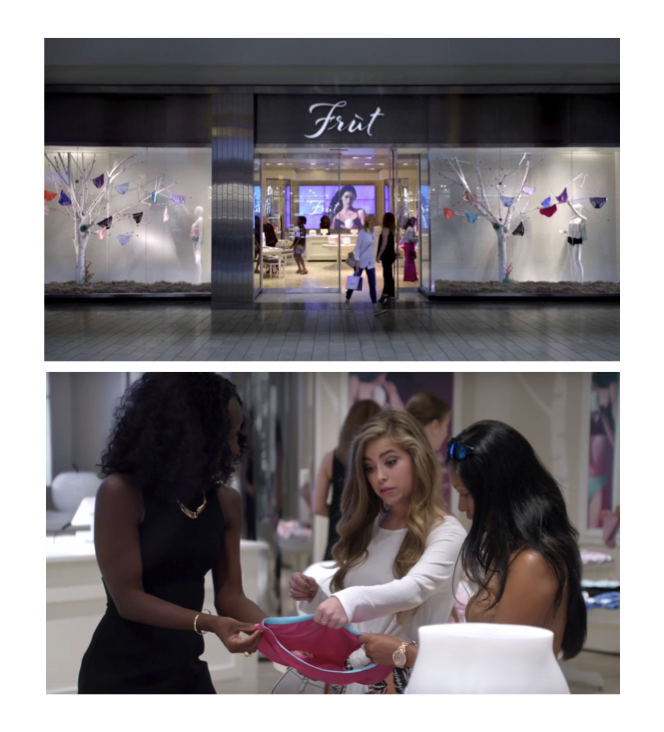
Hit Cafés
While branded experiences have proven to be an effective marketing tool, few have been as successful as the Chobani Café. Transcending the short-term format, Chobani has managed to launch several permanent cafes – one in Soho, one in Tribeca, and one in Texas’s Woodlands. Fellow breakfast staple brand Kellogg’s just announced that following the success of their cereal café, they are also expanding into a more permanent location in downtown NYC, which will be “significantly larger” than the company’s current Times Square spot.
On some level, it makes sense that food brands like Chobani, Kellogg’s, and (maybe) even Cheetos would succeed in the restaurant business, as millions of fans are already familiar with their products. However, color authority Pantone proved that a brand that typically has nothing to do with food can create a hit dining experience when they debuted their seasonal Monaco café in 2015. The café was successful enough that they brought it back in 2016, along with a second Paris location. The Pantone Café serves food and drinks in bold tones, inspired by (and named after) real colors that Pantone has identified. Pantone has already entered mainstream cultural aesthetic, with their trademark color chips appearing on mugs, t-shirts, watches, phone cases, and even USB flash drives. Beyond that, however, most non-designers have no reason to ever interact with the brand. Physical experiences like cafes and pop-ups give companies like Pantone the opportunity to be accessible to a wide, nontraditional audience.
Pantone has already entered mainstream cultural aesthetic, with their trademark color chips appearing on mugs, t-shirts, watches, phone cases, and even USB flash drives. Beyond that, however, most non-designers have no reason to ever interact with the brand. Physical experiences like cafes and pop-ups give companies like Pantone the opportunity to be accessible to a wide, nontraditional audience.
Pop-Ups and Branded Experiences for Digital
Pop-ups are particularly great for online retailers, as it closes the distance between the brands and their consumers. In a moment of unity between a disruptive e-tailer and a major department store, the Herald Square Macy’s hosted a pop-up Etsy shop in 2016 with a rotating variety of curated goods. 22-year-old eBay launched a futuristic London pop-up last Christmas that used “bio-analytic” technology to analyze customers’ facial expressions in response to gift options, and made recommendations on what they should buy. Even Amazon has used pop-ups as a way of allowing people to interact with their electronics and get answers to their tech questions from a staff of experts.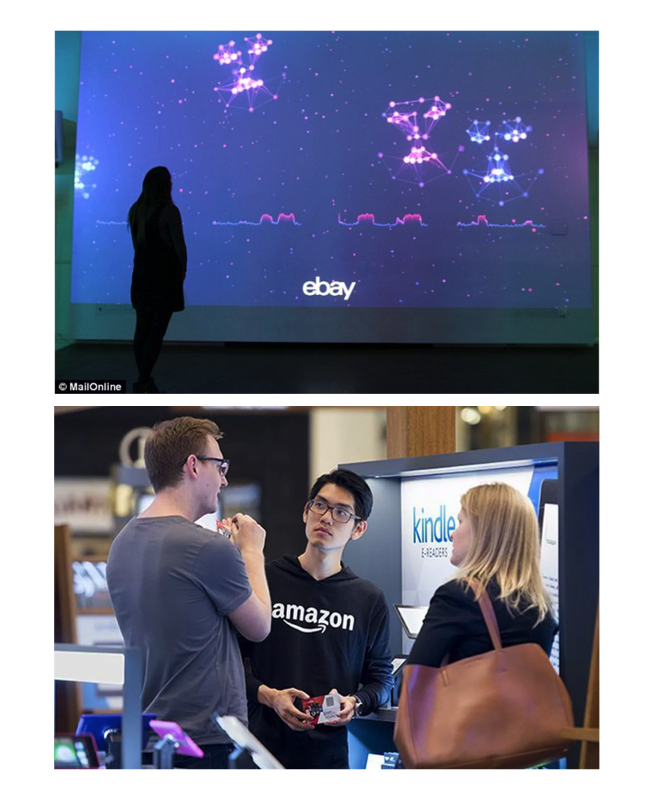 Other types of digital platforms, like streaming services, have been getting into branded experiences as well. It is a natural fit for storytellers – after all, Disney has been teaching the world about the profitability of complementing beloved media works with immersive physical experiences for over six decades.
Other types of digital platforms, like streaming services, have been getting into branded experiences as well. It is a natural fit for storytellers – after all, Disney has been teaching the world about the profitability of complementing beloved media works with immersive physical experiences for over six decades.
In the past, this meant theme parks and gaming. In the digital age, this can mean anything, from the most technologically advanced attractions to the simplest exhibitions. In 2015, Hulu made an exact replica of the Seinfeld apartment set to promote the series, which they had just acquired for streaming. It featured original items by the show, including some set pieces and the jersey worn by Patrick Warburton’s character in a season 6 episode. Seinfeld is one of the most venerated television series in American history, and Hulu chose to create an unpretentious display that would interest new viewers, while avoiding gimmicks that would alienate the original audience.
This year, South by Southwest featured several interactive media experiences. AMC created a pop-up “Los Pollos Hermanos” restaurant (Breaking Bad’s fictional fast-food chain that served as a front for a massive drug operation) to promote the new season of spinoff series Better Call Saul, and Showtime recreated the “Double R Diner” from Twin Peaks in celebration of the series’ revival. Last October, Netflix took over more than 200 coffee shops around the country and transformed them into pop-up “Luke’s Diners“ to commemorate the 16th anniversary of the Gilmore Girls premiere and to get fans excited for the revival miniseries. The event drew massive crowds, as hundreds of viewers lined up early in the morning to get free cups of coffee and check out the replicated décor, including signs and cardboard cutouts of characters from the show.
Last October, Netflix took over more than 200 coffee shops around the country and transformed them into pop-up “Luke’s Diners“ to commemorate the 16th anniversary of the Gilmore Girls premiere and to get fans excited for the revival miniseries. The event drew massive crowds, as hundreds of viewers lined up early in the morning to get free cups of coffee and check out the replicated décor, including signs and cardboard cutouts of characters from the show.
Musicians and Pop-Ups
It isn’t just visual media brands that are building physical spaces for engagement. Fans were delighted last year when singer Frank Ocean finally released his long-anticipated sophomore album Blonde, handing out CDs for free at surprise pop-up shops in New York, Los Angeles, Chicago, and London. This came just months after Kanye West opened a pop-up shop in Soho to sell merchandise for his album The Life of Pablo. Unlike Frank Ocean, Kanye announced the plans for the pop-up ahead of time, and fans stood in line for several hours waiting to get in.
Just over a week ago, Drake opened a new flagship store in Toronto for his own brand, OVO. The location is special for fans (it’s only about ten minutes from where Drake grew up), and over a thousand of them started lining up early in the morning the day before the store opened. OVO (October’s Very Own) also has locations in New York and Los Angeles.
Getting Creative
Experience marketing can be a little bit harder for brands that already operate with quick, face-to-face interactions with customers. For a brand like Krispy Kreme, a restaurant or pop-up retail store wouldn’t make much sense. The solution that they found was clever – an ATM that dispensed Nutella-flavored donuts, a new limited-edition flavor that the company wanted to promote. All of the proceeds from the ATM went to Teenage Cancer Trust, creating even more incentive for passersby to use the machine.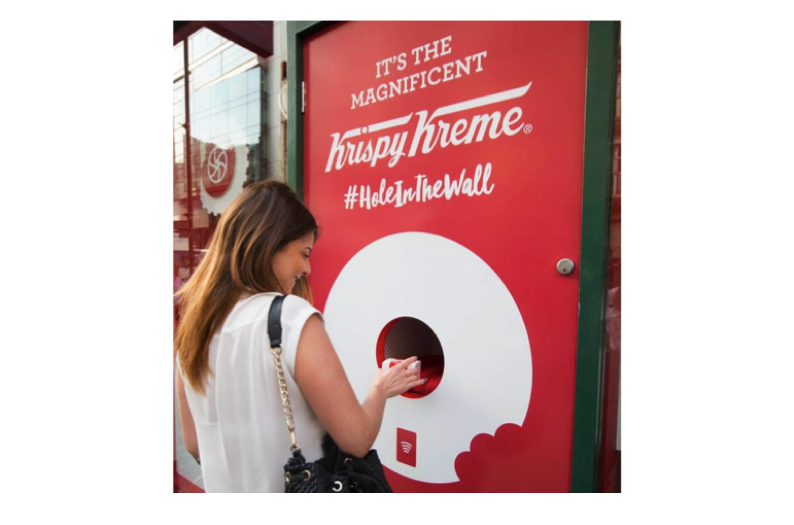 While a Krispy Kreme ATM is a dream come true for many, experiential marketing isn’t always light. Some brands, like Delta Airlines, Nike, and Glade, have developed very conceptual installations that are meant to add new depth to their image. Delta’s exhibit at the 2015 TED conference in Vancouver – inspired by travel writer Pico Iyer’s talk on the “art of stillness” – involved placing an orb on a pedestal in a glowing room. Titled “Stillness in Motion”, the experience was created to connect the ideas of calmness and productivity with Delta’s efforts in in-flight technology and modern accommodations.
While a Krispy Kreme ATM is a dream come true for many, experiential marketing isn’t always light. Some brands, like Delta Airlines, Nike, and Glade, have developed very conceptual installations that are meant to add new depth to their image. Delta’s exhibit at the 2015 TED conference in Vancouver – inspired by travel writer Pico Iyer’s talk on the “art of stillness” – involved placing an orb on a pedestal in a glowing room. Titled “Stillness in Motion”, the experience was created to connect the ideas of calmness and productivity with Delta’s efforts in in-flight technology and modern accommodations. Nike, as a leading athletic brand, tends to heavily focus their branding on celebrating the human body and the feats that it can accomplish. At Milan Design Week 2016, the company partnered with ten modern artists to explore “natural motion” through different mediums. Some pieces in the exhibition were practical, often including Nike products or objects that were clearly inspired by them, while others were much more abstract.
Nike, as a leading athletic brand, tends to heavily focus their branding on celebrating the human body and the feats that it can accomplish. At Milan Design Week 2016, the company partnered with ten modern artists to explore “natural motion” through different mediums. Some pieces in the exhibition were practical, often including Nike products or objects that were clearly inspired by them, while others were much more abstract. Nike was not alone. Seven years ago, fellow apparel brand Levi’s put up a temporary installation in San Francisco, its home base. Part of its “We Are All Workers” campaign, the fixture underlined the company’s commitment to local communities. San Francisco was also home to Levi’s print workshop, which aimed to produce works and projects for the greater community.
Nike was not alone. Seven years ago, fellow apparel brand Levi’s put up a temporary installation in San Francisco, its home base. Part of its “We Are All Workers” campaign, the fixture underlined the company’s commitment to local communities. San Francisco was also home to Levi’s print workshop, which aimed to produce works and projects for the greater community.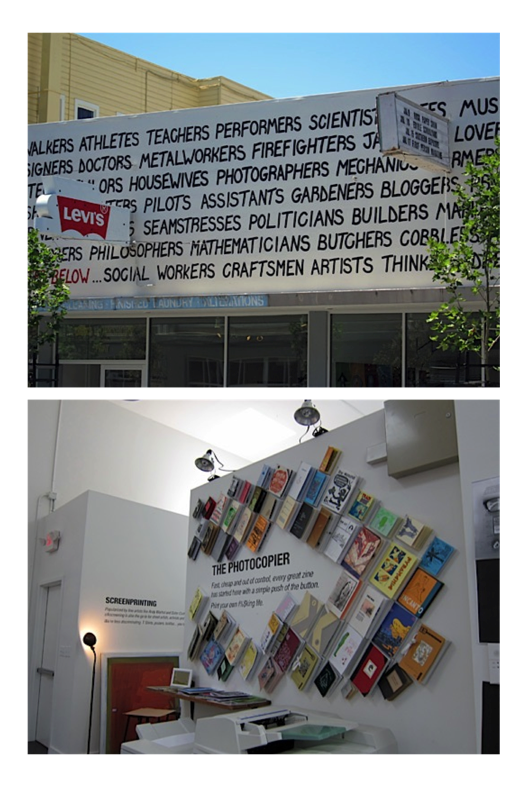 Air freshener brand Glade also got conceptual with their 2015 “Museum of Feelings”, which contained a series of trippy rooms that corresponded to a specific scent. Each scent was meant to evoke one of five tailored emotions: optimism, joy, invigoration, exhilaration, or calmness. As smell is the strongest sense for memory recollection, Glade’s bold plan was to curate a series of pleasant, dreamlike experiences that visitors could relive every time they smelled the correct Glade product.
Air freshener brand Glade also got conceptual with their 2015 “Museum of Feelings”, which contained a series of trippy rooms that corresponded to a specific scent. Each scent was meant to evoke one of five tailored emotions: optimism, joy, invigoration, exhilaration, or calmness. As smell is the strongest sense for memory recollection, Glade’s bold plan was to curate a series of pleasant, dreamlike experiences that visitors could relive every time they smelled the correct Glade product.
Brands like Glade are arguably best suited for experiential marketing campaigns, since scent – which is what they actually sell, whether it comes in the form of sprays, gels, candles, etc. – is intangible. Though their scents may be packaged, fully immersive experiences like the Museum of Feelings add an extra dimension to the way that consumers perceive the products.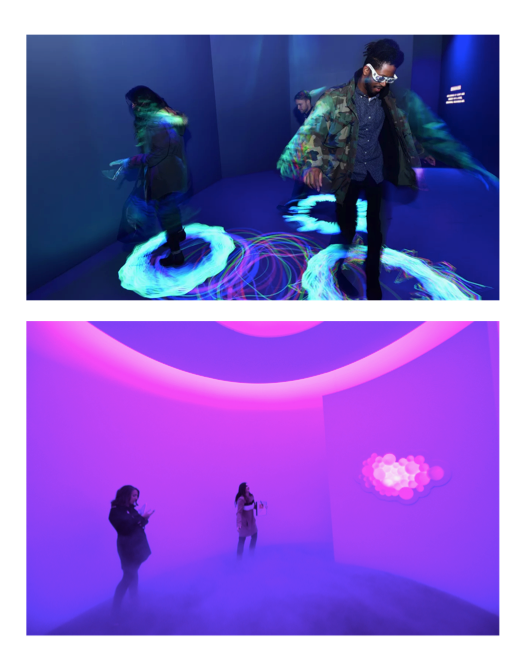
Looking Forward
As for the future of experiential marketing, the most obvious factor to point to is the fast pace of digital technology. It can be expected that as virtual reality and augmented reality mature, they will likely find a home in experimental campaigns. The implication of mixed-reality tools is that they will be able to pull users into the brand story in ways that couldn’t easily be replicated in the physical world. More events will look like eBay’s pop-up, using newly developed technologies like artificial intelligence and bots to actively learn about consumers and alter their experience accordingly.
In line with recent trends, experiential marketing will also see a shift away from the standard practice of drawing people in to an event, instead reaching people where they already are. Places where large amounts of people gather every day – subway stations, street corners, etc. – will be increasingly viewed as prime real estate for campaigns. This is especially true of operations like the Krispy Kreme vending machine, which don’t require a huge amount of space compared to other stunts.
Livestreaming also continues to be popular, and while some brands still resist the format (live broadcasts are unpredictable by nature), it is likely that we will also see more of these events streamed online to encourage engagement with consumers who can’t physically be there. Since so many of these campaigns are temporary, brands will want to reach the widest audience possible while they have the opportunity. Brands are also realizing that there is a lot of charm in unpolished, DIY-style reporting, making the event feel authentic. Companies that continue to showcase their work only through expensive, professionally shot videos will soon seem a little cold and out-of-touch.
Virtually any brand can create an experience for consumers. While some may require more imagination than others, there’s no denying that branded experiences are a great tool for building relationships with audiences. Unlike other some other popular brand campaign styles, experiential marketing hasn’t seen oversaturation or obnoxiousness. This may change as copycat campaigns are bound to eventually emerge, but for now, it is still fun to see how creatively different brand interpret the strategy.
- < Previous Brand Stories: Alex and Ani
- Next > Audio in Branding




